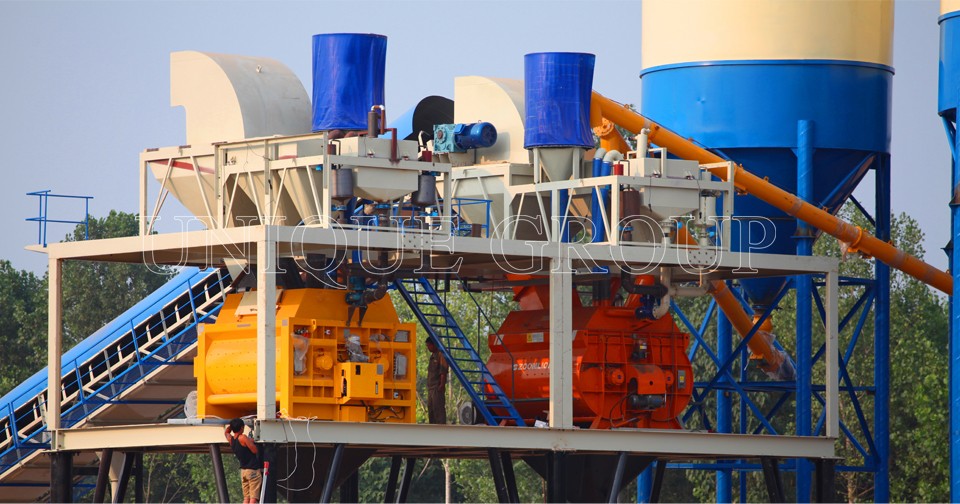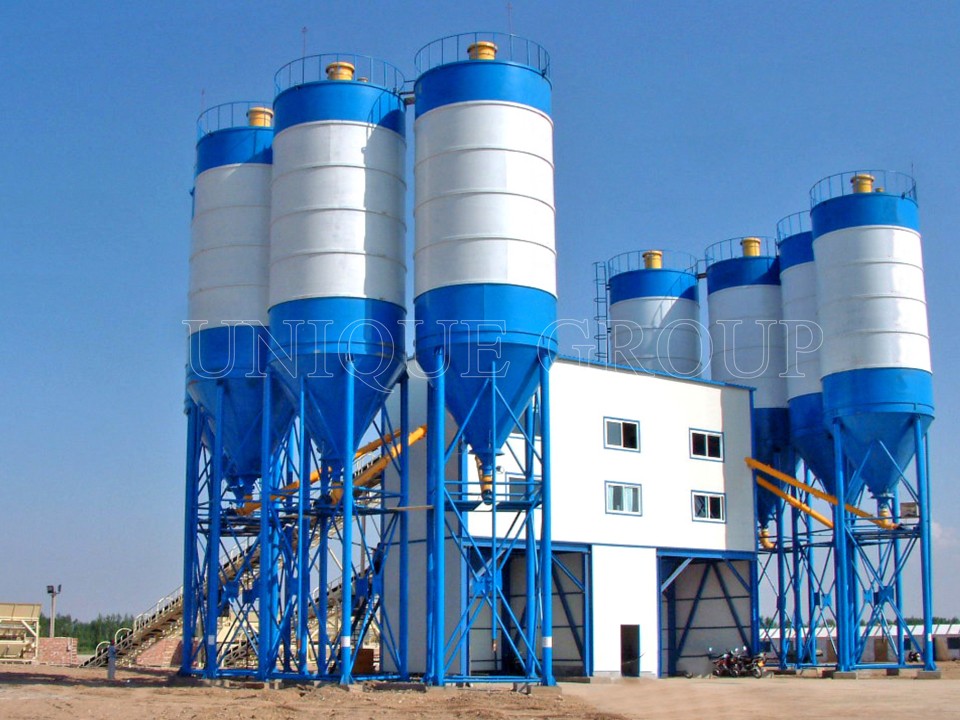Maintaining a concrete batching plant is crucial for ensuring its efficient operation, extending its lifespan, and producing high-quality concrete. Here’s a comprehensive guide to maintaining different components of the plant, along with key practices:
Inspect Mixer Drums:
Check the wear of internal blades, liners, and agitators. Replace worn parts to maintain mixing efficiency and prevent concrete segregation.
Clean the drum’s exterior and inspect for cracks or corrosion.
Evaluate Storage Bins:
Check for rust, cracks, or blockages in cement, aggregate, and additive bins. Use vibrators or air cannons to prevent material bridging.
Calibrate load cells and level indicators to ensure accurate material measurement.
Test Electrical Systems:
Inspect wiring for fraying, loose connections, or overheating. Tighten terminals and replace faulty cables.
Check the functionality of motors, inverters, and control systems. Perform load tests on critical components.
Clean Thoroughly: After each use, flush the mixer with water and gravel to remove Residual concrete. For heavy buildup, use chemical cleaners.
Lubricate Seals: Ensure shaft seals and bearings are properly lubricated to prevent leaks and contamination.
Replace Wear Parts: Schedule timely replacement of mixer blades, liners, and drive components based on usage hours or manufacturer recommendations.
Belt Alignment: Adjust conveyor belts to prevent misalignment, which can cause material spillage or belt damage.
Tension Adjustment: Maintain proper belt tension to avoid slippage or excessive strain on motors.
Inspect Rollers: Replace worn or damaged idler rollers to ensure smooth material transport.
Air Compressors: Drain moisture from air tanks, replace air filters, and check for air leaks in hoses and valves.
Hydraulic Systems: Monitor oil levels, replace filters, and flush/replace hydraulic oil according to the maintenance schedule. Inspect cylinders and hoses for leaks or damage.
Clean Filters: Regularly clean or replace dust filters to maintain air quality and prevent dust buildup in the concrete batching plant.
Check Fan Performance: Ensure exhaust fans and ducts are unobstructed and functioning efficiently to minimize dust emissions.
Maintenance Logs:
Document all maintenance tasks, part replacements, calibration results, and equipment failures. This helps track trends and schedule future maintenance.
Operator Training:
Train staff on proper plant operation, safety protocols, and basic maintenance (e.g., daily cleaning, minor adjustments).
Ensure operators recognize early signs of concrete equipment issues (e.g., unusual noises, performance drops) and report them promptly.
Pre-Winter Prep:
Post-Winter Checks:
By following these maintenance practices, you can optimize the performance of your concrete batching plant, reduce downtime, and ensure consistent production of high-quality concrete. Adjust the schedule based on the plant’s usage frequency, manufacturer guidelines, and local environmental conditions.

